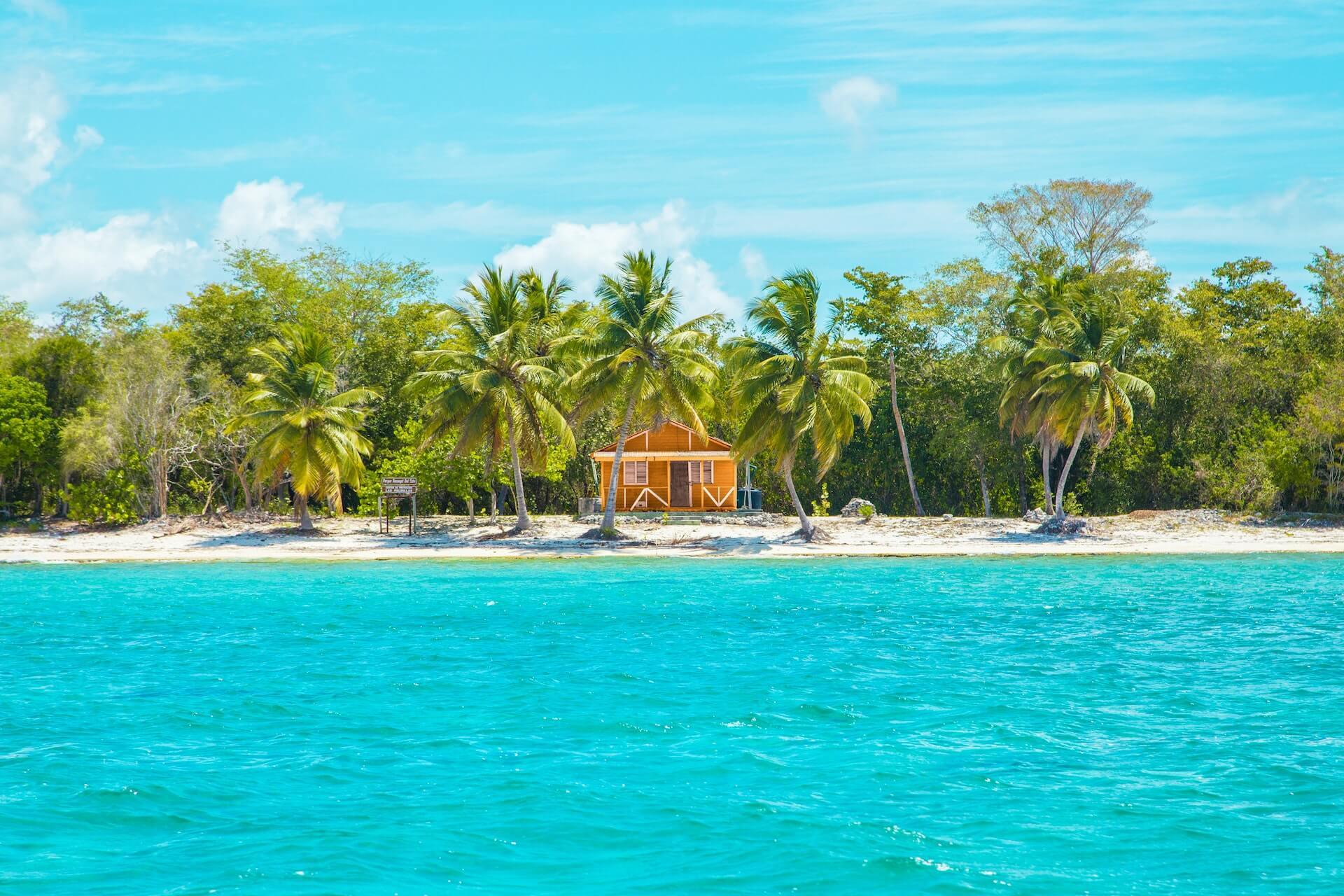
Dominican Republic: the most beautiful country the human eye has ever seen

Dominican Republic: the most beautiful country the human eye has ever seen
The year was 1492, when the sailor Christopher Columbus anchored off the coast of Quisqueya Island (today's Hispaniola), where the Dominican Republic is located, and said, "This is the most beautiful country the human eye has ever seen." The Dominican Republic is not just white sandy beaches. The country abounds with beautiful tropical scenery, nineteen national parks, waterfalls, and even three-thousand-foot mountains. Coral reefs line the coastline, where colourful fish, stingrays and sea turtles roam, and its capital, Santo Domingo, home to the oldest monuments on the American continent, is a UNESCO World Heritage Site.
Summer all year round
You can go to the Dominican Republic at any time. Temperatures in this tropical country hover around 27 °C year-round. In the winter season, from December to May, they stay below 30 degrees and the climate is more arid. Then from June to November they rise slightly above 30 and are more humid. As a point of interest, in the Cordillera Central in the interior of the island, temperatures can drop to zero in the winter months. Specifically, this is the Constanza area, otherwise known as Dominican Switzerland.
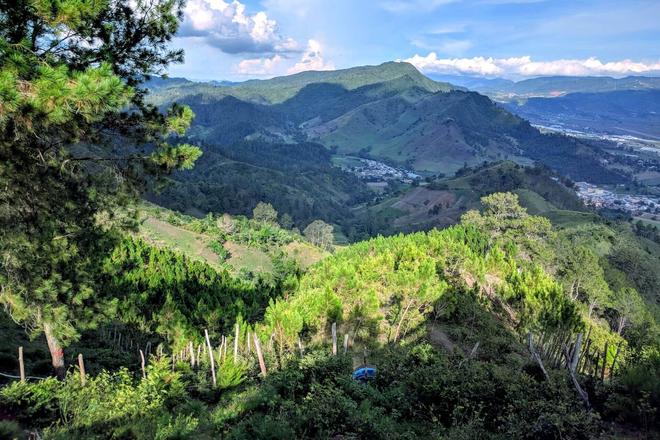
What to know before you go
To enter the country, you'll need a passport (valid for six months after returning home) and a tourist card, which costs $10 and can be obtained online or upon arrival at the Dominican Republic airport. The good news is that there are no mandatory vaccinations required in the country. Spanish is spoken in the Dominican Republic, but other world languages are spoken in all tourist resorts. The voltage is 110 volts, so be sure to bring a plug adapter.
Waterfalls, monuments and national parks
When people say the Dominican Republic, they usually think of beaches with coconut palms towering over them. But there's so much more to see. The Dominican Republic is a varied and interesting country even for solo travellers. You can visit one of the nineteen national parks (e.g. Jose del Carmen Ramirez, Los Haitises, Montecristi, Del Este) or go to the waterfalls (Aguas Blancas, Jimenoa, Bayaguana, El Limón, among others). Culture lovers can wander the colonial streets of Santo Domingo, or visit the Victorian Puerto Plata in the north of the country, or La Isabela.
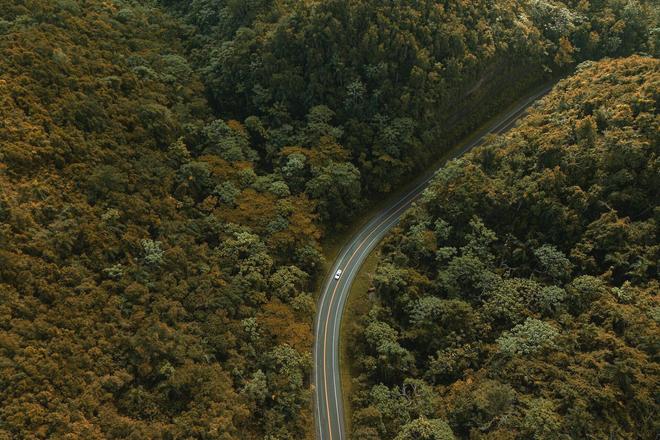
Where to go for relaxation
While the north of the Dominican Republic is bathed by the Atlantic, the southern coast is Caribbean. The most popular resort is Punta Cana on the east coast, where the Atlantic Ocean meets the Caribbean Sea. Popular Punta Cana beaches include Uvero Alto, Cabeza de Toro, Macao, El Cortecito, Juanillo and Bávaro. On the south coast, the popular resorts of Boca Chica, family-friendly Juan Dolio and La Romana-Bayahibe with the nearby islands of Saona and Catalina.
A paradise for backpackers and nature lovers
If you prefer less touristy places, head to the northeast of the country to the Samaná Peninsula. If you rent a car or quad bike, you can travel the peninsula from the town of Las Terrenas through Santa Bárbara de Samaná to Las Galeras. As well as the beaches of Portillo, Rincón and Bonita, be sure to visit the caves, where paintings of the indigenous Taínos have been preserved. In addition, humpback whales come to the waters of the Gulf of Samaná in winter.
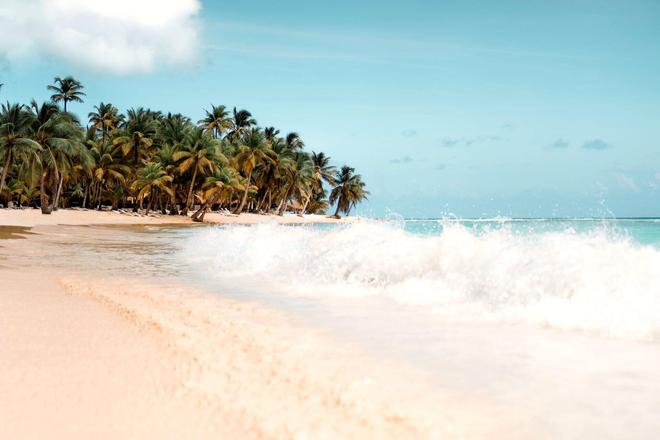
For an unconventional stay, try the Dominican Tree House Village, an eco-hotel set in the canopy of a tropical rainforest. Rooms are equipped with handmade wooden furniture and hammocks. Paths and flower and fruit tree beds criss-cross the hotel, and there is also a Yoga House.
Adventure lovers will enjoy the south-west coast in the Barahona-Pedernales region. The paradisiacal Bahía de las Águilas (Eagle's Cove) beach, part of the Jaragua National Park and a UNESCO Biosphere Reserve, is definitely worth a visit. The beach is approximately 300 km west of the capital Santo Domingo and there are only two possible ways to reach it – either by boat or by a four-wheel drive off-road vehicle. There are no hotels or restaurants on the beach or in its vicinity, and only low scrub vegetation grows here. So be sure to bring sunscreen with high SPF, an umbrella and plenty of drinking water and food.
Eagle Bay is home to several endangered animal species (e.g. Ricord's iguana) and 130 bird species (e.g. Antillean pigeon and red-winged pigeon). Common eider ducks and great crested grebe come here to lay their eggs. Among the endemic animals, it is possible to see bristleheads, Hispaniolan hutia, broad-nosed manatees and fish-eating bats. Enriquillo Salt Lake, 160 km north of Eagle Bay, is home to flamingos and American crocodiles.
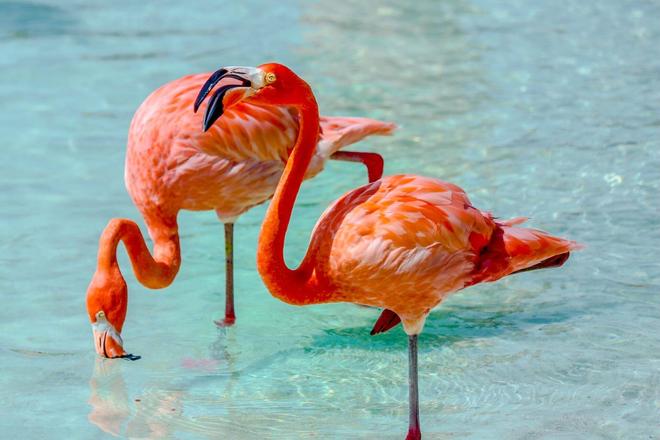
In Barahona, be sure to visit the Larimar Mines – this rare turquoise semi-precious stone is only mined in the Dominican Republic.